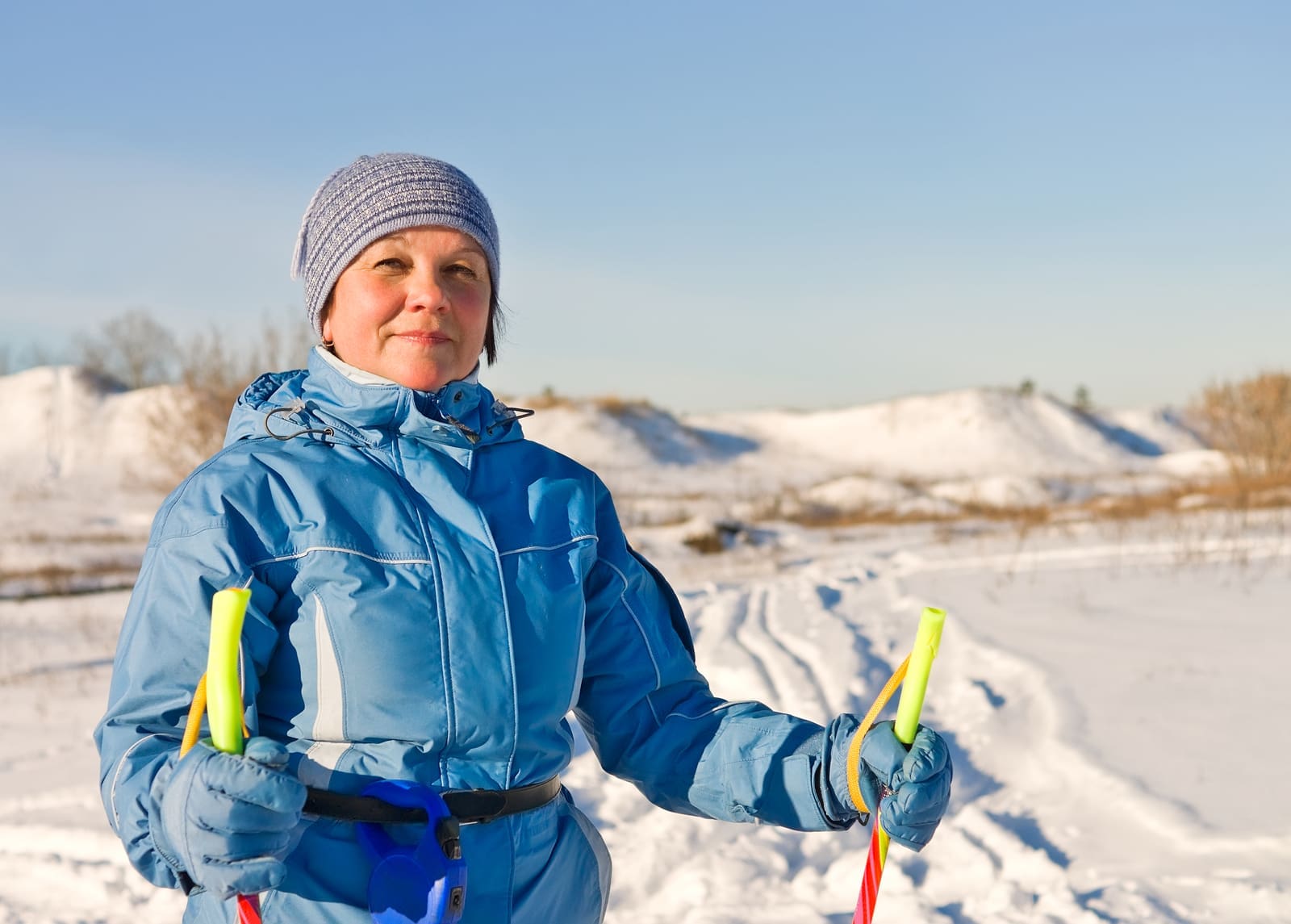
Women’s Alpine Skiing: History and Highlights
Women’s alpine skiing is an exhilarating sport that has been enjoyed by millions around the world. It has a fascinating history filled with daring feats and impressive accomplishments. Over the decades, it has become increasingly popular among female athletes pushing the boundaries of what is possible on skis. From the first woman to compete in alpine skiing in 1922 to the Olympic medals won by female competitors, women’s alpine skiing has come a long way since its humble beginnings.
In honour of International Women’s Day 2025, let’s celebrate the pioneers, top skiers, and notable moments of women’s alpine skiing.
A Brief History of Women’s Alpine Skiing
Alpine skiing began in the European Alps in the late 19th century, and it quickly gained popularity among men. However, it wasn’t until the early 20th century that women began to participate in the sport. The first women’s alpine skiing competition was held in Mürren, Switzerland, in 1924, featuring slalom and downhill races. This marked a turning point for women in the sport, as it provided a platform for female athletes to showcase their skills.
Despite initial resistance from some male skiers and officials, women’s alpine skiing began to bridge the gender gap as it gained traction and became an Olympic sport in 1936. Since then, women’s skiing has grown tremendously, with more countries and athletes participating in competitions worldwide. The sport has evolved from a niche activity to a global phenomenon, inspiring countless women to take up skiing and compete at the highest levels.
Women’s Skiing in the Olympics
Women’s alpine skiing has been a part of the Winter Olympics since 1936. However, it wasn’t until 1952 that women’s downhill was added to the Olympic programme. Today, women compete in five alpine skiing events at the Winter Olympics: downhill, super-G, giant slalom, slalom, and the combined event. These events test a skier’s speed, agility, and technical prowess, making them some of the most thrilling competitions in winter sports.
The inclusion of women’s alpine skiing in the Olympics has not only elevated the sport but also provided female athletes with a global stage to showcase their talent. Over the years, the Olympics have witnessed some of the most iconic moments in women’s skiing, from underdog victories to record-breaking performances.
The Pioneers of Women’s Alpine Skiing
Women’s skiing has been shaped by many pioneers over the years. One of the most influential pioneers was Hanni Wenzel from Liechtenstein. Wenzel won two gold medals at the 1980 Winter Olympics and is widely considered one of the greatest alpine skiers of all time. Her success paved the way for future generations of female skiers.
Other pioneers include Gretchen Fraser, who won the first Olympic gold medal in women’s alpine skiing in 1948, and Christl Cranz, who won five Olympic medals in the 1930s. These trailblazers not only achieved personal success but also challenged societal norms, proving that women could excel in a sport traditionally dominated by men.
The Impact of Technology on Skiing
Technology has played a significant role in the development of skiing. In the early days of the sport, skiers used wooden skis, leather boots, and bamboo poles. Today, skiers use high-tech equipment made from materials like carbon fibre and Kevlar. This equipment has made it possible for skiers to ski faster and more safely than ever before.
Advancements in ski design, clothing, and safety gear have also contributed to the growth of women’s alpine skiing. Modern skis are lighter, more flexible, and better suited to different snow conditions, allowing skiers to push their limits. Additionally, innovations in training methods and sports science have helped female athletes achieve peak performance.
The Greatest Women Alpine Skiers of All Time
There have been many great women’s alpine skiers over the years. Some of the most notable include Lindsey Vonn, who won four Olympic medals, including one gold, and four overall World Cup titles; Mikaela Shiffrin, who has won three Olympic medals, including two golds, and six overall World Cup titles; and Annemarie Moser-Pröll, who won six overall World Cup titles and three Olympic medals, including one gold.
These athletes have not only achieved remarkable success but also inspired millions of fans around the world. Their dedication, resilience, and passion for the sport have set new standards for excellence in women’s alpine skiing.
The Most Memorable Moments in Women’s Skiing
Women’s skiing has had its fair share of memorable moments over the years. One of the most memorable was Lindsey Vonn’s performance at the 2010 Winter Olympics, where she won the downhill gold medal. Another being Mikaela Shiffrin’s gold medal-winning slalom run at the 2014 Winter Olympics. And who could forget Hanni Wenzel’s incredible performance at the 1980 Winter Olympics, where she won two gold medals and one silver?
These moments have not only defined careers but also left an indelible mark on the sport. They serve as a reminder of the incredible talent and determination of female skiers.
How Women’s Skiing Has Evolved Over the Years
Women’s alpine skiing has come a long way since the early days of the sport. Today, women are faster and more skilled than ever before, thanks in part to advancements in equipment and training methods. The courses themselves have also become more challenging, with steeper slopes and more technical turns.
The sport has also become more inclusive, with increased opportunities for women to compete at all levels. From grassroots programmes to professional leagues, women’s alpine skiing continues to grow and evolve.
Women’s Alpine Skiing Today
Today, women compete in events at all levels, from local competitions to the Winter Olympics. Women’s Alpine Skiing world cups have become a global sensation, thrilling audiences and inspiring generations of athletes. For many, the thrill of watching top female skiers race down snow-covered mountains is like no other. Women’s Alpine Skiing World Cups bring out the best in female athletes who compete on the highest levels for glory and national pride.
Some of the top female skiers in the world today include Petra Vlhova of Slovakia, who won the overall World Cup final in 2021, and Lara Gut-Behrami of Switzerland, who won two gold medals at the 2021 World Championships. These athletes continue to push the boundaries of what is possible in the sport.
The Future of Women’s Skiing
The future of women’s alpine skiing looks bright. As technology continues to advance, skiers will be able to ski faster and more safely than ever before. And as more women and girls take up the sport, we can expect to see even more talented female skiers in the years to come.
The growing popularity of women’s skiing is also likely to lead to increased investment in the sport, from training facilities to sponsorship deals. This will provide more opportunities for female athletes to pursue their dreams and achieve success.
How Women’s Skiing Has Inspired Other Women’s Sports
Women’s alpine skiing has been an inspiration to other women’s sports. The success of female skiers has shown that women can compete at the highest levels of sport and achieve great things. This has inspired girls and women around the world to take up sports and pursue their dreams.
The visibility of women’s alpine skiing has also helped to challenge stereotypes and break down barriers in other sports. By showcasing the strength, skill, and determination of female athletes, women’s skiing has played a key role in promoting gender equality in sports.
The Enduring Legacy of Women’s Alpine Skiing
Women’s alpine skiing has had a significant impact on the world of skiing as a whole. Female skiers have pushed the boundaries of what is possible in the sport, and the achievements of women have helped to elevate skiing to new heights. Women’s alpine skiing has also helped to make skiing more accessible and inclusive, encouraging more people to take up the sport.
Think you could measure up to professional athletes on the slopes? You’ll need a reliable transfer to get you there. Alps2Alps brings you safe, affordable transfer services to all major resort destinations in the Alps. Find your low-cost transfer here!







